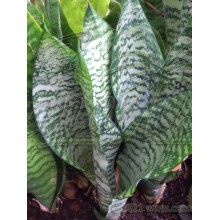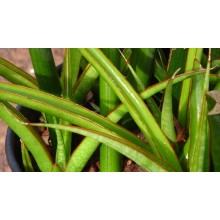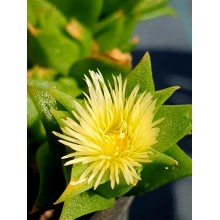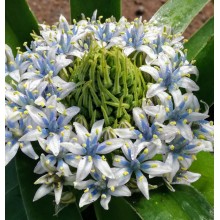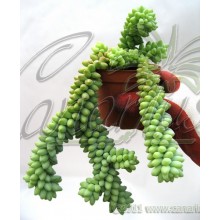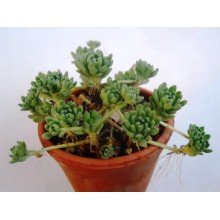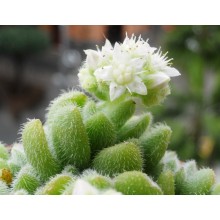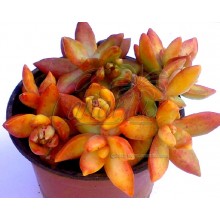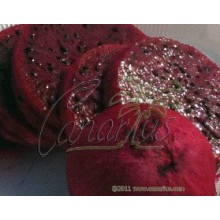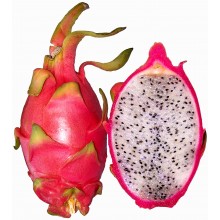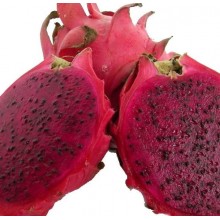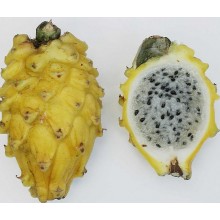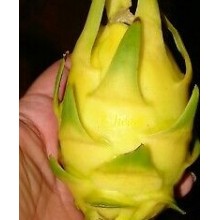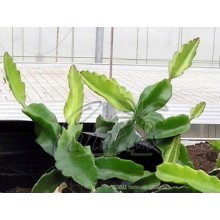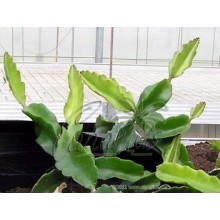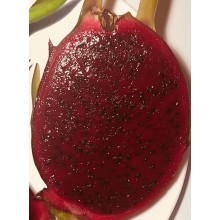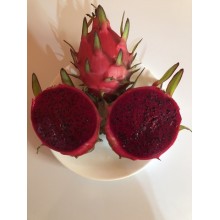Succulents There are 628 products.

World deserts and dry areas are home to the most interesting plants. Canarius offers an increasing selection of succulent plants of maximum quality, because they are grown outdoors, under the full sun of the Canary Islands.
Succulents or "fat plants" are water-retaining species, adapted to dry conditions. They store succum (juice, water) in their leaves, stems or roots, and often show a stout and fleshy appearance.
Subcategories
-
Agave
Agave is a genus of succulent plants from America. Some species grow in cold areas and take hard frost, while some others live in tropical climates. Some are tiny dwarfs and some are giants, up to 2 or 3 m wide.
Cold hardy agaves can create an exotic effect in your garden. Agave species make fine companions to palms or cacti. Variegated agaves are incredibly sought after by collectors. Our web shop offers an ever changing selection of species. We ship bare rooted plants, unless otherwise specified.
-
Aloe, Gasteria & Haworthia
Aloe, Gasteria and Haworthia are three related genera, comprising hundreds of succulent plants. They are all easily grown in pots. A few adapt to low-light levels of indoor conditions and can be grown as house plants.
- Aloe is a genus of about 400 species, native to Africa, Arabia and Madagascar. Small or dwarf aloes are becoming especially popular in colder climates as they can be taken indoors during the hardest months.
- Gasteria includes some 80 species endemic to South Africa, known for their spectacular leaves which are glossy, mottled and textured. They bloom in Spring-Summer with long spikes of small orange flowers. Some species are so variable that we offer particular clones from specific locations.
- Haworthia is a genus endemic to South Africa with about 70 species and a number of local subspecies, varieties and forms. Leaves are often banded, speckled, dotted, or semi-translucent and show wide variations.
-
Crassulaceae
This is a new, growing section of species from the family Crassulaceae. There are about 1,400 species in 33 genera and their distribution is worldwide, but mostly occur in the Northern Hemisphere and Southern Africa, especially in dry habitats. Here you can buy healthy, sun-hardened plants grown in the Canary Islands and shipped to your home.
-
Mesembs
This group of desert plants is briefly named Mesembs because they belong to a botanical family formerly named Mesembryanthemaceae. There are almost 2.000 species, mainly found in Southern Africa, with extreme adaptations to dry habitats. Some are called "living stones", as they look like pebbles. Many are easy to grow and their main need is full sun. Some are difficult because they grow in truly extreme areas.
Our Web Shop offers sun grown healthy plants, with compact and colourful leaves. Some plants are sold as cuttings, and others as rooted plants, of at least two years old.
-
Sansevieria
Recently assigned to the family Asparagaceae, the genus Sansevieria counts about 70 species, nearly all native to Africa, Arabia and Madagascar. Perennial herbs adapted to dry habitats with stiff, succulent leaves, their length ranges from a few centimeters to 2 meters. Sansevieria trifasciata and its many cultivars are among the most popular houseplants, popularly called mother in law's tongue. A well grown plant usually produces a spike of many white, richly scented flowers and then orange berries. Even the rarest species are resistant to neglect, provided you keep them from frost in winter and scorching sun in summer.
-
Hoya
Hoyas are twining vines, with showy exotic flowers, from the rainforests in Asia and Oceania. Most species grow in bright shade or morning sun, but they will also grow indoors as house plants. They are well suited for baskets, trellises or ladders. They tolerate a few weeks of drought but they are sensitive to frost and cold. Many hoyas are easy to grow and bloom, while some are tricky and rare.
-
Asclepiads
Asclepiads or Asclepiadoideae are a subfamily in the Apocynaceae, with about 2900 species. There are lots of leafless stem succulents but also perennial herbs, shrubs, lianas or rarely trees. They produce remarkable flowers, for the complex mechanisms they have developed for pollination. Many species produce an unusual fragrance, often called "carrion", and attracts flies for pollination. -
Caudiciforms
These plants from dry areas produce an unusually thick stem, the caudex. They are also called pachycauls and they have a disproportionately thick trunk, often with few branches. The caudex can be hidden underground, but in most cases they grow upwards, forming spectacular trees. The largest caudiciforms in the world are the baobabs. -
Other succulents
Here you will find all those species of desert plants that are not included in their own category. We will place here all plants from unusual families, other than Agaves, Aloes, Crassulaceae, Sansevieria, Mesembs, Epiphytic cacti, etc.
-
Sansevieria trifasciata cv Robusta
Sansevieria trifasciata cv Robusta
NEW ! - An old classic in sansevierias, withmid-sized, glossy leaves with a green and grey banded pattern.An old classic in sansevierias, with mid-sized, glossy leaves with agreen and grey banded pattern.
10,90 € -
Sansevieria x 'Midnight Fountain'
Sansevieria x 'Midnight Fountain'
This sansevieria is slender, as a "fountain!", with very dark blue-green leaves with a red edge.
16,40 € -
Sceletium tortuosum 'joubertii'
Sceletium tortuosum 'joubertii'
Low growing mesemb which indeed is rare in cultivation. It is sought after both because it is very ornamental and unusual but also because of its medicinal use. It grows creeping stems with abundant pale yellow flowers.
15,20 € -
Scilla sicula
Scilla sicula
The Sicilian Squill (Scilla sicula) is a bulbous herbaceous perennial (geophyte) with smooth elongate leaves pointed at the tip. It is distinguished by pale flowers and broad, marginally ciliate leaves (with a line of short, white hairs).
34,00 € -
Sedum burrito
Sedum burrito
NEW! - Branched plant, Cont.= 8,5 cm. Popular mexican plant with long weeping branches with dense blue-green leaves. It is great in pots or hanging baskets, because the cascading chains can get 1 m long or more. It naturally hangs from dry cliffs in South
10,70 € -
Sedum hirsutum subsp. baeticum
Sedum hirsutum subsp. baeticum
Cute small Sedum native to Southern Spain and possibly NW Africa. It grows as small compact rosettes of green pubescent leaves, held on low stolons. It flowers from June to August with white star-shaped blossoms with wide petals.
10,30 € -
Sedum mocinianum
Sedum mocinianum
This "different" hairy Sedum is a small beauty from from high elevations in Mexico. It is a very compact plant with ovate rounded leaves fully coated in white "hairs". It blooms in March with bouquets of white flowers.
10,30 € -
Sedum nussbaumerianum
Sedum nussbaumerianum
Popular succulent, turning yellow-orange in full sun. Colourful rounded leaves are clustered along short stems. This species is native to the rocky ravines of Southern Mexico but it is hardy to light frosts.
8,80 € -
Selenicereus 'Connie Mayer' - Pitahaya
Selenicereus 'Connie Mayer' - Pitahaya
Greenish-red fruit with pink pulp, of medium size, coconut flavored. Very pretty purple flower. It can pollinate with undatum, hybridum or JC01Rooted cutting of 20-25 cm.
21,70 € -
Selenicereus 'JC02' - Pitahaya
Selenicereus 'JC02' - Pitahaya
Rooted cutting of 20-25 cm. Red skin red flesh. It needs a pollinator and the best is H.purpusii. Most pitahayas need a pollinating mate of a different species, in order to set fruits.
21,70 € -
Selenicereus undatus 'B19'
Selenicereus undatus 'B19'
This 'B-19' variety has red skinned fruit with white flesh and a very sweet taste with a brix degree of 13º. This variety needs cross-pollination so that the fruit can reach a weight that can exceed 500 g. B-19 is considered a very productive variety in terms of size and quantity of fruit.
21,70 € -
Selenicereus x 'American Beauty'
Selenicereus x 'American Beauty'
Hylocereus x 'AMERICAN BEAUTY'- is a fantastic new hybrid of Hylocereus guatemalensis X Hylocereus undatus - It is self-pollinating and produces an abundance of of aesthetically pleasant fruits with a nice pink flesh with a soft texture. They are very sweet and juicy, ideal for cocktails or fresh fruit smoothies.
23,50 € -
Selenicereus 'Delight' - Pitahaya
Selenicereus 'Delight' - Pitahaya
Self-fertile, pollinates with its own flower, red-skinned with pink flesh.Rooted cutting of 20-25 cm.
25,00 € -
Selenicereus 'Hybridum' - Pitahaya
Selenicereus 'Hybridum' - Pitahaya
One of the best selection, imported from Reunion island. It bears round fruits with red flesh.
21,70 € -
Selenicereus 'JC03' - Pitahaya
Selenicereus 'JC03' - Pitahaya
Rooted cutting of 20-25 cm. A good pollinator Hylocereus used by cultivators of Reunión Island for H. undatus, H. purpusii e H. hybrids. The taste of the fruits is not the best but it is still nice to eat.
23,00 € -
Selenicereus 'JC05' - Pitahaya
Selenicereus 'JC05' - Pitahaya
We offer a rooted cutting of 20-25 cm
21,70 €
At the moment there are few products in this category Succulents

























